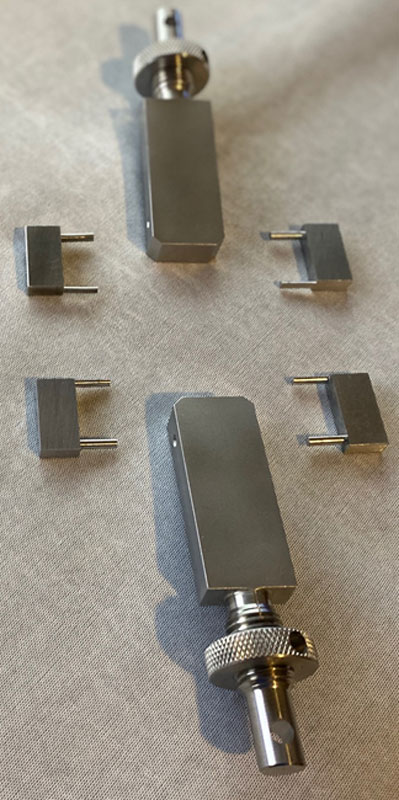Mode I Fracture Testing Apparatus
An apparatus that uses load frames to conduct Mode I Fracture Testing of bonded structures without surface prep, adhesive mixing, alignment jigs, or prolonged wait times

Fracture testing drives material selection and design considerations for virtually all structural components. The conventional method for sample preparation and Mode I Fracture Testing involves using bonding hinges or loading blocks to apply the opening peel force to the specimen surface. Achieving accurate and repeatable results can often require significant re-work, making current methods expensive and time consuming for structural testing labs.
Sandia researchers have developed a new approach to fracture testing that uses a tabletop drill hole jig and a rotating pin block to prepare and load the specimen. This approach eliminates hinges and any adhesive bonding for sample preparation which allows for rapid and accurate testing of samples at a fraction of the cost and time compared with conventional methods. Sandia’s solution for Mode I Fracture Testing sample preparation has a load train capable of free rotation during crack tip opening displacement. Use of high strength and corrosion-resistant materials ensures durability and accuracy for testing under various environmental conditions. Multiple configuration options to the standard base package allow for varied material construction and different test ranges to suit most sample testing conditions and applications.
- Reduced sample preparation time
- Improved sample and test repeatability
- Customizable test fixture configurations
- Reduced cycle time and costs
- Aerospace
- Automotive
- Civil
- Composite materials (co-bonded, secondary bonded, and co-cured configurations)
- Defense
- Energy Storage
- Recreation
- Structural testing laboratories
| Patent Title | Patent Number | Grant Date |
|---|---|---|
| Mode I fracture testing fixture | 11,298,754 | 04/12/2022 |
SD#15229
Published12/10/2020
Last Updated1/7/2025